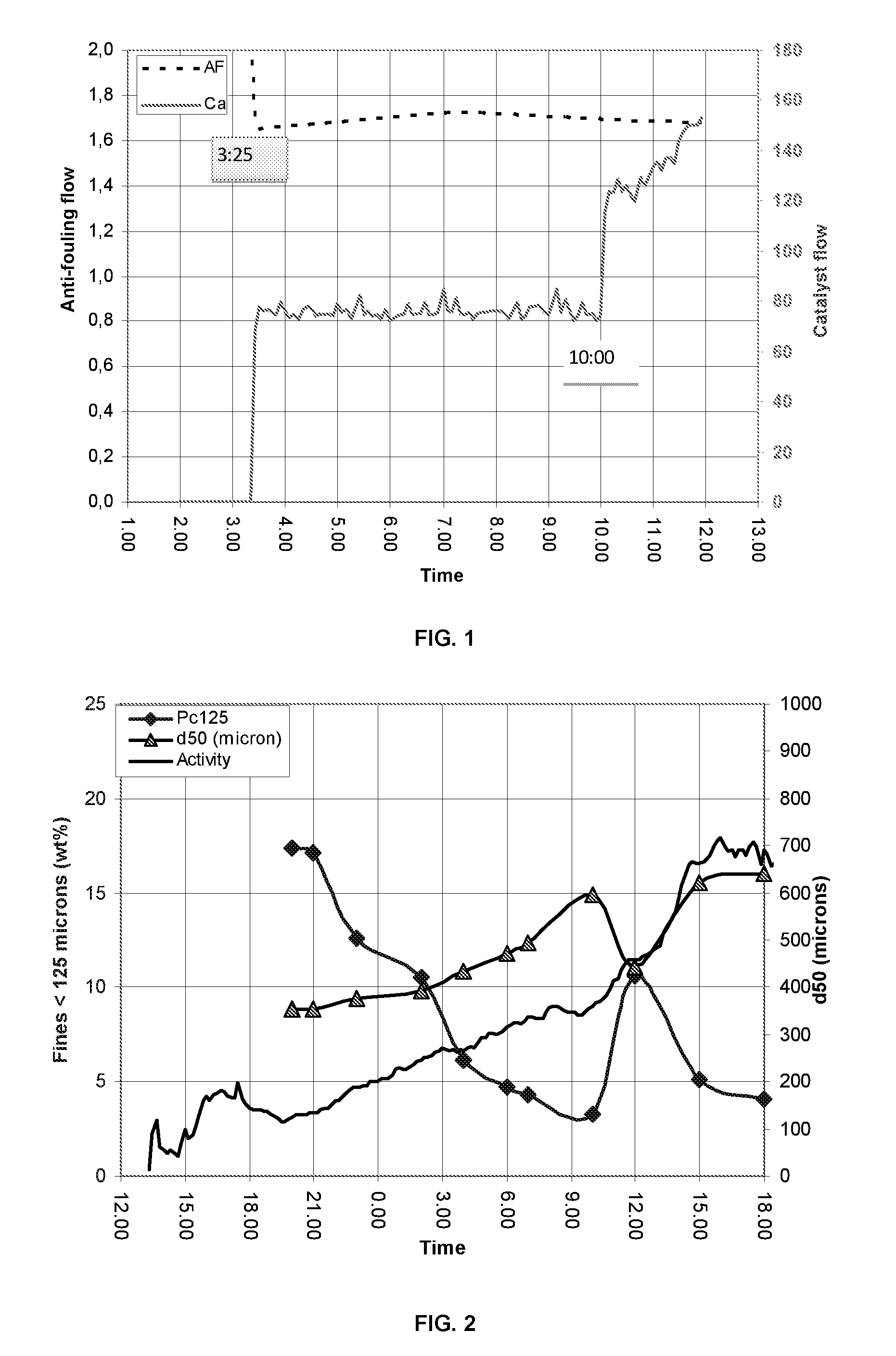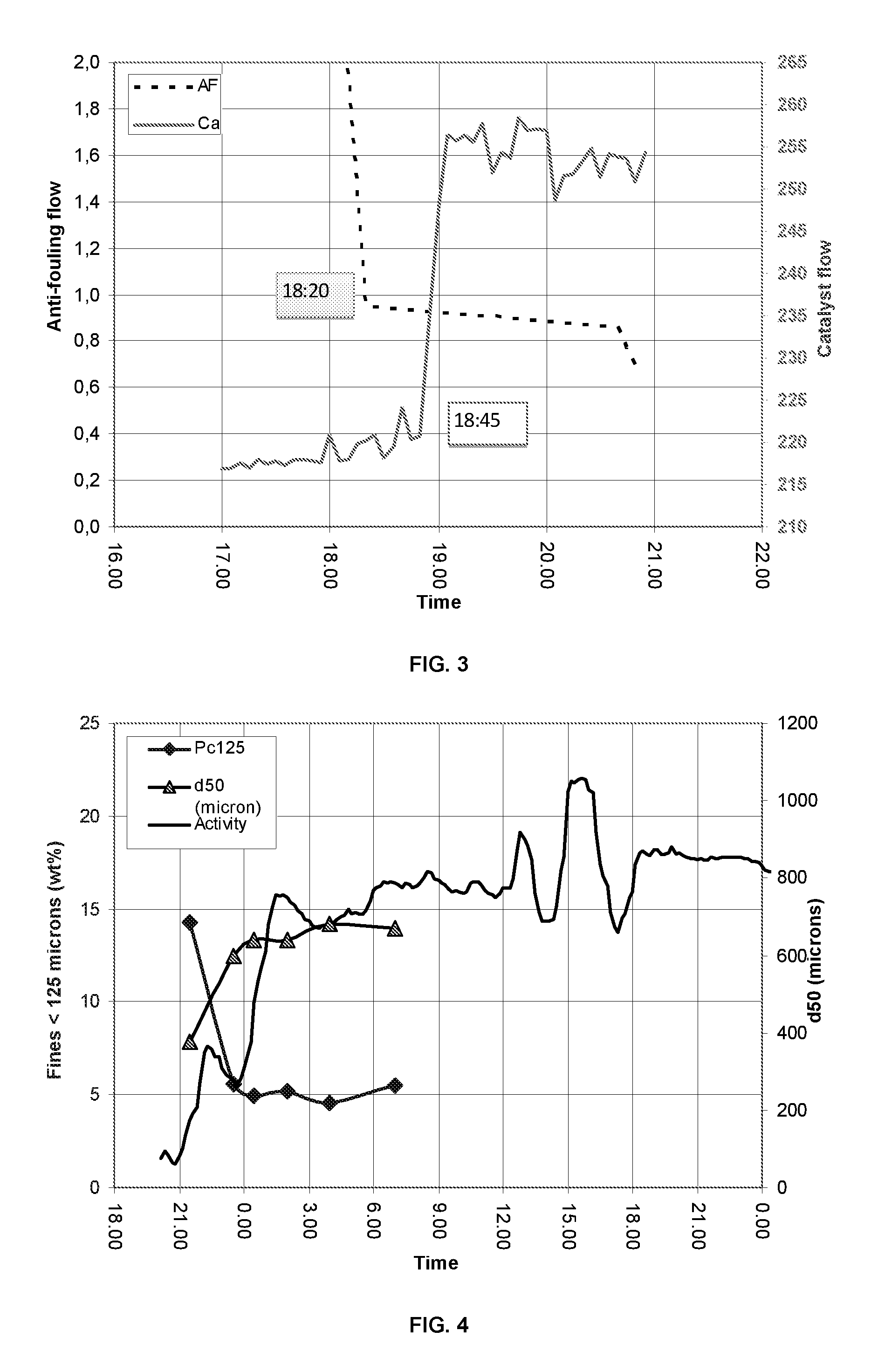Process for preparing polyolefins and use of antifouling agents therein
a technology of polyolefins and antifouling agents, which is applied in the direction of chemical/physical/physical-chemical processes, chemical apparatus and processes, chemical/physical/physical-chemical stationary reactors, etc., can solve the problems of less than optimal end-products, and achieve high-quality end-products, reduce reactor downtime, and reduce waste
- Summary
- Abstract
- Description
- Claims
- Application Information
AI Technical Summary
Benefits of technology
Problems solved by technology
Method used
Image
Examples
example
Example 1
[0097]At start-up of the polymerization process, ethylene monomer, comonomer, a metallocene catalyst, hydrogen, activating agent and about 2 t / h isobutane are fed in a single loop reactor. An axial pump is used to pump around the resulting slurry. 10 g / h of an anti-fouling composition comprising 2.5% of Synperonic PEL121 anti-fouling agent dissolved in hexene is introduced into the reactor. After 10 min, a metallocene catalyst is introduced under 200-240 kg / h isobutane.
[0098]Catalyst fines production is limited and the reactor is quickly stabilized for production of polyethylene.
example 2
[0099]Experiment 1: At start-up of a polymerization process in a slurry loop reactor, ethylene monomer, comonomer, hydrogen, activating agent and isobutane were fed in a single loop reactor. An axial pump was used to pump around the resulting slurry. An anti-fouling composition was introduced into the reactor. 6 hours after the introduction of the anti-fouling agent, a metallocene catalyst was introduced into the reactor. The flow of antifouling agent and catalyst as a function of time was monitored and is shown in FIG. 1. The percentages of particles with a particle size below 125 μm (also referred as fines) were measured together with the average particle size D50. The activity of the catalyst was also monitored during the polymerization reaction. The D50 is defined as the particle size for which fifty percent by weight of the particles has a size lower than the D50, which is measured by sieving. The results are shown in FIG. 2. FIG. 2 shows fines generation and slow activity grow...
PUM
| Property | Measurement | Unit |
|---|---|---|
| time | aaaaa | aaaaa |
| particle size | aaaaa | aaaaa |
| particle size | aaaaa | aaaaa |
Abstract
Description
Claims
Application Information
 Login to View More
Login to View More - R&D
- Intellectual Property
- Life Sciences
- Materials
- Tech Scout
- Unparalleled Data Quality
- Higher Quality Content
- 60% Fewer Hallucinations
Browse by: Latest US Patents, China's latest patents, Technical Efficacy Thesaurus, Application Domain, Technology Topic, Popular Technical Reports.
© 2025 PatSnap. All rights reserved.Legal|Privacy policy|Modern Slavery Act Transparency Statement|Sitemap|About US| Contact US: help@patsnap.com


